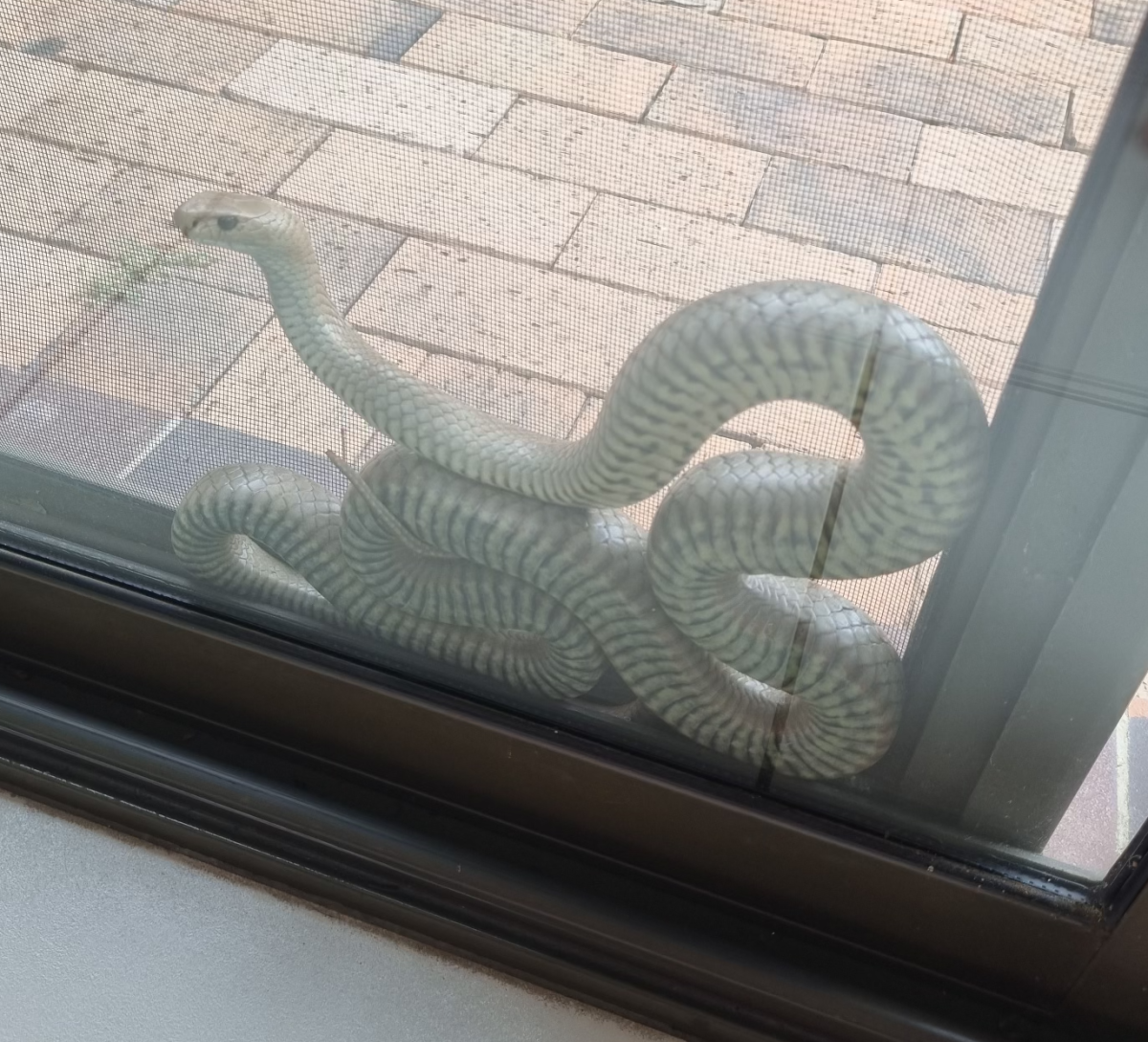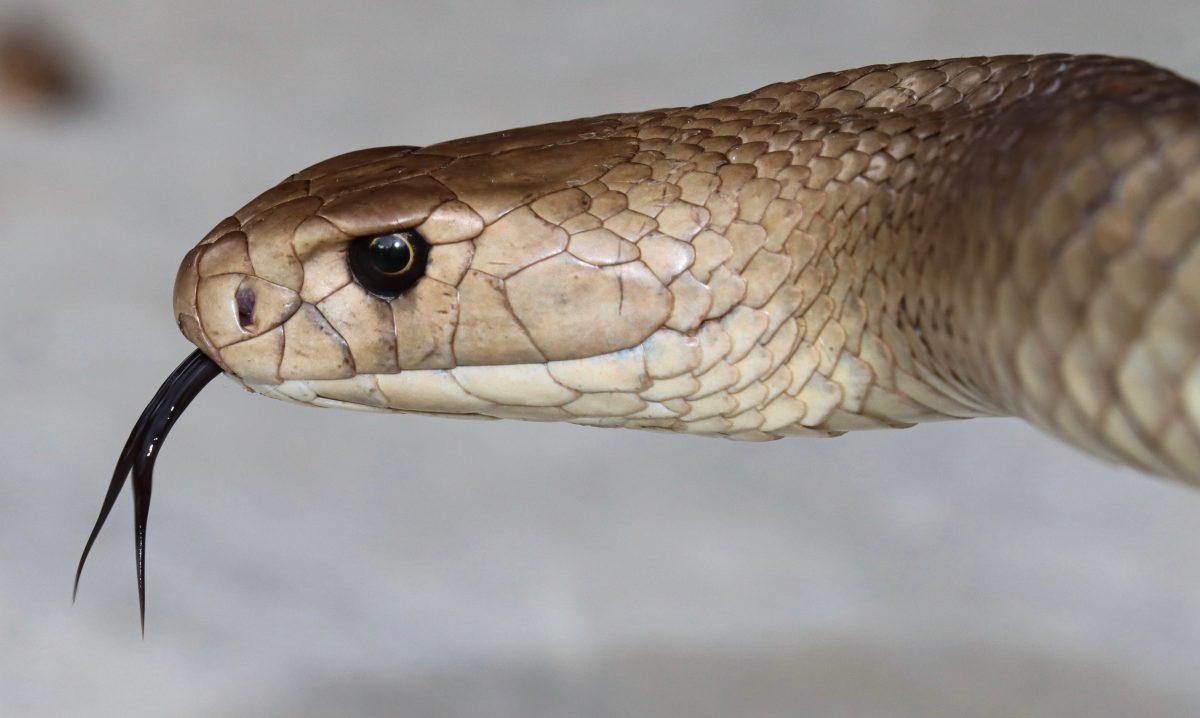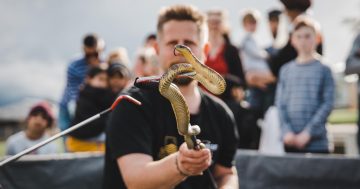
There has been a rise in snake sightings in the nation’s capital, particularly eastern brown snakes. Photo: Jacob Filiatrault.
It’s official! It’s snake season!
Canberrans have been taking to social media to share the various nooks and crannies their reptilian neighbours find themselves in.
Recently, a video of the founder of ACT Snake Removals and primary investigator for the ANU’s Canberra Snake Tracking Project, Associate Professor Gavin Smith, relocating an eastern brown snake caught between a glass door and fly screen went viral.
When Associate Professor Smith received the call, he could not believe what he was hearing.
“I was like, ‘Wow, really?’ as that’s quite unusual. The resident just wanted it removed quickly, effectively and safely, which I specialise in.
“As you can see in the video, it’s climbed up the flyscreen, and it’s obviously just trying to get out and it’s not able to locate that small aperture it came through.
“When I got there, the homeowner was happy for me to rip the flyscreen, and it was safer for me to gently lift the snake out of there, take it into the bag and then job done!”
Associate Professor Smith said about 85 per cent of his callouts are for eastern brown snakes like the 1.54-metre snake trapped in the video.
“The two most common species found in urban Canberra are the eastern brown snake and the red-bellied black snake. Other reasonably common species in certain habitats in the wider ACT region are the tiger snake and highland copperhead. ”
The upsurge of snake sightings in Canberra corresponds to the snake breeding season.
“Depending on climatic factors, eastern brown snakes start to appear in early August from their over-wintering burrows. After a period of re-acclimatising, during September and October, a breeding phase happens,” Associate Professor Smith told Region.
“Things tend to quieten down quite considerably through April as the snakes begin to look for a hibernaculum for their brumation cycle.
“The months of September and October are the busiest time for ACT Snake Removals in terms of calls and snake relocations, as male snakes transit more frequently and move larger distances in search of female snakes to mate with.”
Canberra’s natural environment of reserves and wetlands is attractive for snakes.
“The presence of snakes in and around yards is extremely common in Canberra, especially those adjoining or proximate to reserves or paddocks or wetlands, or those which comprise a number of snake attractants like food and hydration points in hot and dry conditions.”
Associate Professor Smith is keen to inform the public about the ecology and biology of snakes.
“The most important thing I do is provide the Canberra region with solid, research-based information about local snake ecology and behaviour. I want to raise levels of education, awareness and tolerance to snakes and thus improve their safety and conservation outcomes.”
He is also keen to amend the negative characterisation snakes have been stuck with.
“It is important that people understand that snakes have been in this landscape for millions of years and we have built our homes on their habitats,” said Associate Professor Smith.
“It is a misconception that our local snakes are evil and aggressive by nature. They can, of course, defend themselves vigorously when provoked, cornered, handled or stood on, but they almost always try to flee from a would-be threat or camouflage themselves in vegetation to avoid detection.”
“These snakes, when treated with respect, are not the animals we often think they are.”

Since 2016, Associate Professor Gavin Smith has been informing the public about the ecology of snakes and how to look after them better in Canberra. Photo: Jacob Filiatrault.
In his experience, Associate Professor Smith has found snakes to become more habituated, to a degree, to the presence of humans.
“Some species have learned to adapt to human disturbance better than others, the eastern brown being a good example. Despite being highly feared, these snakes are timid, sensitive and cryptic, and they are keen to avoid initiating a confrontation with humans and our domestic animals, the bite statistics clearly indicating this fact.”
Associate Professor Smith has been slowly building up a team of Canberra snake handlers to aid with snake relocation.
“I am currently trying to train and mentor more local handlers so that we can cope with demand,” he said.
Associate Professor Smith hopes to share his passion with the ACT community.
“I really want to see the future of Canberra, not necessarily people loving them but appreciating snakes as valuable figures in our local ecosystem.”
Original Article published by Joanne Griffiths on Riotact.




